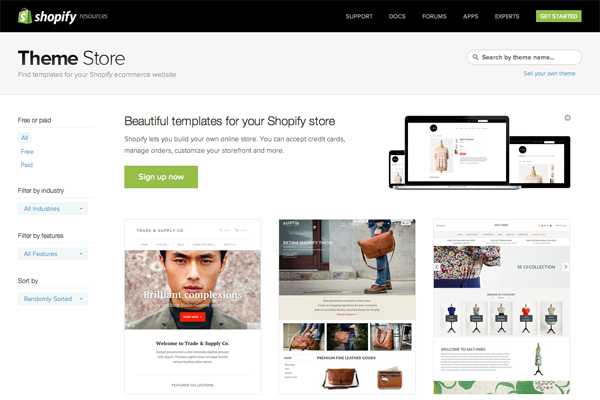
Rameet Chawla is the founder of Fueled, an award winning development and design company based in New York and London, and the Fueled Collective, a co-working space in downtown Manhattan. This post was originally published on his company’s blog.
With the rise of e-commerce platforms like Shopify, Squarespace, and now Weebly, the painstaking process of setting up an e-commerce website no longer takes months, but just a few hours in a day.
Because of these new tools, the barriers to entry for e-commerce have been completely lowered. Now, everyone from a local mom-and-pop shop owner to an established retail chain can efficiently run their entire business online by building on these specialized platforms.
Get up and running fast with basic functionality
With over $2 billion in merchant sales, Shopify is one of the most popular e-commerce platforms out there, recommended for its usability, hosted solutions, and large base of starter templates. For retailers with under 10,000 SKUs, Shopify is the best platform to use.
For smaller shops, the platform is fairly affordable – a Starter Plan costs $14 a month. Shopify is also a hosting solution, which means you won’t have to deal with installing software, setting up a host, and handling performance issues.
For those who don’t know HTML from CSS, the platform is also non-programmer friendly; the Shopify Theme Store has hundreds of beautifully designed templates you can browse, customize, and put to use. If you are comfortable with a bit of code, the CSS files are completely editable for each theme, so you can tweak any design to your liking.
Shopify also features an add-on library that can add more functionality to your shop; for instance, they recently announced support for Shopify gift cards.
One of the most useful features offered in Shopify is the payments processor. Traditionally, you would have to go through a long procedure of setting up a site that can be authenticated to receive credit card payments; the other option is to use a third-party gateway like PayPal. But using such a gateway isn’t great for user experience, and you could even potentially lose some sales.
Shopify solves this pain point by offering its own payments processor that allows you to accept any credit card without a third-party gateway. To make the payment experience even more seamless and convenient, Shopify recently announced a new integrated POS system that works with iPads (think Square) for merchants who own brick-and-mortar stores.
Similar, hosted alternatives to Shopify include: Volusion, Big Commerce, and Squarespace.
Supercharge your online shop with fulfillment services
Fulfillment services, which can help you further streamline your e-commerce shop, are often not taken advantage of by many retailers. Using a fulfillment service means never having to deal with shipping! For retailers who are growing fast and can no longer ship items manually due to volume and warehouse constraints, fulfillment services is a fantastic option.
Fulfillment by Amazon, or Amazon FBA is one service that lets you take full advantage of Amazon’s scale and technology. The company provides fulfillment centers that are located across the globe and close to your customers, so that shipping can be fast and convenient; Amazon FBA can even manage returns.
While Amazon is not yet fully supported by Shopify, Shipwire and Webgistix are similar fulfillment services that are able to integrate with your Shopify storefront.
Take advantage of e-commerce platforms
Utilizing these tools and platforms is all about being lean. There are no special functionalities to painstakingly set up, great looking designs are readily available to use, and even labor-intensive processes like fulfillment can be streamlined.
Not only are platforms like Shopify fantastic if you’re looking to get a shop up and running quickly, but they are also surprisingly robust: they can handle thousands of SKUs and can add many desired functionalities, like product reviews or Facebook plug-ins, easily and seamlessly to your site.
You’ll be surprised at just how many plug-and-play functionalities you can include to enhance your shop’s e-commerce experience. A process that used to take months to set up can now only take you one day, and the technology and features are only getting better.
Top image credit: LDprod/Shutterstock
Get the TNW newsletter
Get the most important tech news in your inbox each week.





